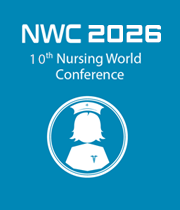Title : Nursing research: How about mixed methods research
Abstract:
Nursing research mostly adopted quantitative approach in 1960s and 1970s. Qualitative approach had not developed much popularity during this time and numerical data was considered superior to the narratives for generalizations of the research findings. Nursing is more close to social and sciences; therefore, it was realized that qualitative approach in research is more meaningful and desirable to comprehend patient’s behaviour and response to treatment. A good number of researches have been conducted by nurses using qualitative methods. These studies have enriched the nursing knowledge with deeper understanding of the phenomenon of nursing. It was; however, felt that quantitative (QUAN) research provides numerical values devoid of human emotional element which is very important to understand human behaviour, and at the same time, qualitative (QUAL) findings are subjective, context and region specific, presented in narratives, therefore, to generalize these findings for larger and diverse populations may not be possible or scientifically right. Solution to this dilemma came in the form of Mixed Methods Approach (MMA). Now, this approach is burgeoning as more and more nurse researchers have started using it to find answers to nursing and patient problems. Mixed methods research refers to those studies that integrate one or more qualitative and quantitative techniques for data collection and analysis. But this approach is still evolving as new terms and designs are being suggested. In situations where social and behavioral aspects are known to affect the outcome of a therapeutic regimen in a population, just collecting dry numerical data to assess the status may not be sufficient. It will tell us what the status is but why the things are as they are could be brought to light only by exploring deeper through qualitative approach. Therefore, weakness of a single approach may be overcome by combining both QUAL and QUAN approaches which will provide different pictures of the real world. Here is an example; we used a MMA design to ascertain “the reasons and extent of non-compliance of treatment among the defaulters patients suffering with pulmonary tuberculosis”. We found that this method could answer our exploratory and confirmatory questions and we could simultaneously test a hypothesis and explore the process by which relationships with non-compliance of treatment occurred in the population under study. Parallel design was used, first through interview a deeper understanding of the non-compliance to treatment was explored that led to hypothesis formation and tool development for collecting quantitative data on the extent of the problem. This approach also led the research team to unexpected insight, “as most of the participants were alcoholics and as soon as they felt better, they stopped the treatment, craving for alcohol led them back to drinking that they had temporarily stopped”. This provided an insight that along with the treatment for TB, those who are alcoholics need de-addiction treatment too. MMR made us to look beyond and deeper and recommend better strategies for dealing with non-compliance to treatment of TB.
Takeaway Notes:
• What is Mixed Method Research?
• How is it more applicable to nursing?
• Which areas in nursing are more suitable for Mixed Methods Approach: Situations where social and behavioural aspects are likely to affect care management such as mental health nursing, maternal and child health care etc.
• While selecting a research problem one can see in which problems there is need to explore little deeper to develop an understanding about the phenomenon under study at the same time provide enough numerical data and statistical inferences to apply the findings in similar situations to larger populations.
• Although it is not something absolutely new to the world, yet many nurses are hesitant to use mixed methods research to explore deeply as well as well as expand their inquiry extensively because it is time consuming and needs some expertise having used both quantitative and qualitative methods in research. Through this presentation, I will suggest through examples the possibilities of adopting this research methodology in selective situations.



